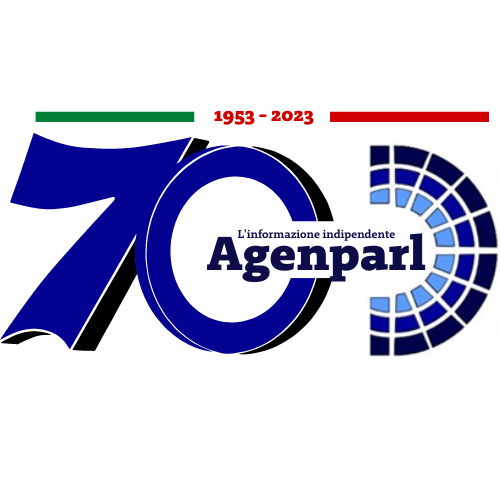 (AGENPARL) - Roma, 13 Giugno 2025
(AGENPARL) - Roma, 13 Giugno 2025(AGENPARL) – Fri 13 June 2025 A weekly compendium of media reports on science and technology achievements
at Lawrence Livermore National Laboratory. Though the Laboratory reviews
items for overall accuracy, the reporting organizations are responsible for
the content in the links below.
LLNL Report, June 13, 2025
LLNL scientists and industry researchers test out AI models at the
Laboratory’s 1,000 Scientist AI Jam Session. (Photo: Randy Wong/LLNL)
AI informs everything we do
https://www.scrippsnews.com/science-and-tech/artificial-intelligence/how-ai-is-playing-a-major-role-in-national-security
America’s national labs have always been at the forefront of scientific
developments and breakthroughs, so it should come as no surprise that
artificial intelligence is an integral part of their scientific process and
American national security.
Scripps News national security correspondent Liz Landers caught up with Dr.
Kimberly Budil, director of Lawrence Livermore National Lab, at the AI+ Expo
in Washington, D.C.
“AI is starting to inform almost everything that we do. So of course, there
are a whole host of operational and business considerations for how to use AI
to make our system smarter, our infrastructure better, to make everything
much more efficient,” said Budil. “But on the science front, I think
there are really three areas. One is how we use data… The second is how we
do experimental science… But the third area I’m really excited about,
particularly for national security, is the way we develop technology.”
Read More
https://www.scrippsnews.com/science-and-tech/artificial-intelligence/how-ai-is-playing-a-major-role-in-national-security
U.S. Secretary of Energy Chris Wright toured the National Ignition Facility
during his visit to LLNL. (Photo: Jason Laurea/LLNL)
Secretary Wright visits LLNL
Energy Sec. Wright tours Lawrence Livermore lab
Lawrence Livermore National Laboratory celebrated Memorial Day week by
hosting Energy Secretary Chris Wright.
Wright is touring all 17 national lab sites, and the Livermore visit started
his swing through Bay Area sites including Lawrence Berkeley and SLAC
National Accelerator Laboratory in Palo Alto. Lab Director Kim Budil showed
him around the lab and its National Ignition Facility that achieved the
historic breakthrough of fusion in a lab.
The visit included meetings with lab leaders in stockpile modernization, AI,
cybersecurity and supercomputing. His tour also included El Capitan, the
exascale computing system that is defining what is possible in modeling and
computer simulation for the nuclear deterrence, fusion and defense.
“Lawrence Livermore National Laboratory is proof of what American science
can achieve when there’s a clear mission and the freedom to pursue it.
President Trump has called on us to modernize our nuclear stockpile, advance
AI, and push breakthroughs in fusion and supercomputing — and that work is
happening here,” said Wright. “The talent, the drive, and the
mission-focus on display at this facility reflect what it takes for America
to lead in science, drive innovation and secure our energy future.”
Read More
Hewlett Packard Enterprise President and CEO Antonio Neri (left) and AMD
Chair and CEO Lisa Su signed an El Capitan compute rack at the
supercomputer’s dedication event. (Photo: Garry McLeod/LLNL)
On top of the world
https://www.hpcwire.com/off-the-wire/top500-el-capitan-retains-top-spot-as-exascale-era-expands/
The 65th edition of the TOP500 showed that the El Capitan system retains the
No. 1 position. With El Capitan, Frontier and Aurora, there are now three
exascale systems leading the TOP500. All three are installed at Department of
Energy (DOE) laboratories in the United States.
The El Capitan system at the Lawrence Livermore National Laboratory,
California, remains the No. 1 system on the TOP500. The HPE Cray EX255a
system was measured with 1.742 EFlop/s on the HPL benchmark. LLNL now also
submitted a measurement for the HPCG benchmark, achieving 17.41 Petaflop/s,
which makes the system the new No. 1 on this ranking as well.
El Capitan has 11,039,616 cores and is based on AMD 4th generation EPYC
processors with 24 cores at 1.8 GHz and AMD Instinct MI300A accelerators. It
uses the HPE Slingshot interconnect for data transfer and achieves an energy
efficiency of 60.3 Gigaflops/watt. El Capitan is the third system exceeding
the exaflop mark on the HPL benchmark.
Read More
https://www.hpcwire.com/off-the-wire/top500-el-capitan-retains-top-spot-as-exascale-era-expands/
With additive manufacturing, LLNL researchers can build tough and strong, as
well as stretchable and flexible, objects nearly instantly. (Photo: Maxim
Shusteff/LLNL)
One resin, two materials
https://newatlas.com/3d-printing/3d-printing-two-materials-one-resin/
While 3D printing is indeed a burgeoning technology, it’s limited by the fact
that items can typically only be printed from a single material. A new system
still uses just one print resin, but that substance can form into two
different solid materials as needed.
Developed by scientists from the University of California Santa Barbara and
the Lawrence Livermore National Laboratory (LLNL), it utilizes a resin made
mainly of epoxy and acrylate monomers. It also utilizes a printer that
simultaneously emits beams of both ultraviolet and visible light. That said,
by independently tilting micro-mirrors within the printer to different
angles, the two beams of light can be separately directed to different
pixel-wide locations within each print layer.
Wherever the resin is exposed to the UV light, the epoxy monomers harden to
form the permanent parts of the object. And wherever the resin is exposed to
the visible light, the acrylate monomers harden to form the support
structures. Importantly, those supports —and only those supports —
dissolve within 15 minutes when the object is subsequently immersed in a
sodium hydroxide (aka lye) solution.
Read More
https://newatlas.com/3d-printing/3d-printing-two-materials-one-resin/
The ports where an 80-kilometer fiberoptic network was connected to the
interrogator, which was used to measure an earthquake in detail.
Earth-shattering technique to detect earthquakes
Researchers at Lawrence Livermore Labs say they figured out how to turn
fiberoptic cables into detailed earthquake sensors. The researchers recently
hooked a box, known as an interrogator, to an existing fiber optic line
running from San Francisco to Sunnyvale. Two weeks ago, their experiment put
to the test. A 3.9 magnitude quake hit Dublin. Well, the researchers say they
measured the quake in much greater detail than ever before. How much better?
They say 1000 times better than current seismometers detecting quakes.
“Distributed sensing is just a game changer. It’s going to allow us to see
the entire wavefield, and we hope to utilize existing fibers in structures
like building and bridges, and to be able to listen in on vibrations, kind of
like a tuning fork, to do stability and health monitoring,” said LLNL
scientist Gene Ichinose. “So, if a structure is damaged due to aging or
from a large earthquake, we should be able to detect that and isolate exactly
where the damage has occurred.”
Read More
——————————————————————————
Founded in 1952, Lawrence Livermore National Laboratory https://www.llnl..gov
provides solutions to our nation’s most important national security
challenges through innovative science, engineering and technology. Lawrence
Livermore National Laboratory is managed by Lawrence Livermore National
Security, LLC for the U.S. Department of Energy’s National Nuclear Security
Administration.
Read previous Lab Report articles online https://www.llnl.gov/news/lab-report
Unsubscribe from this newsletter
